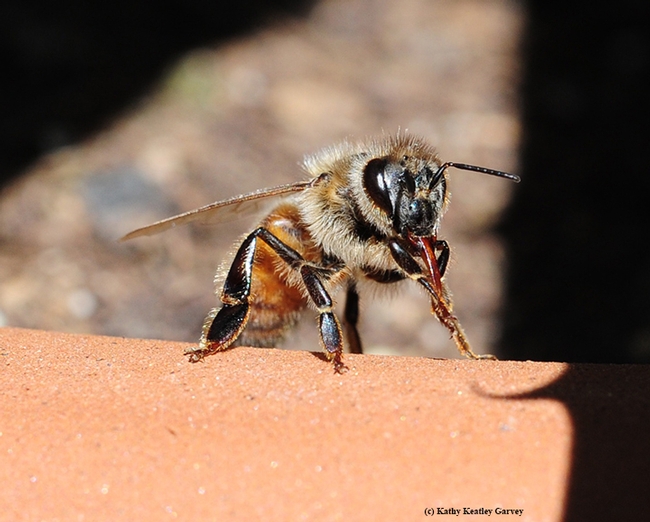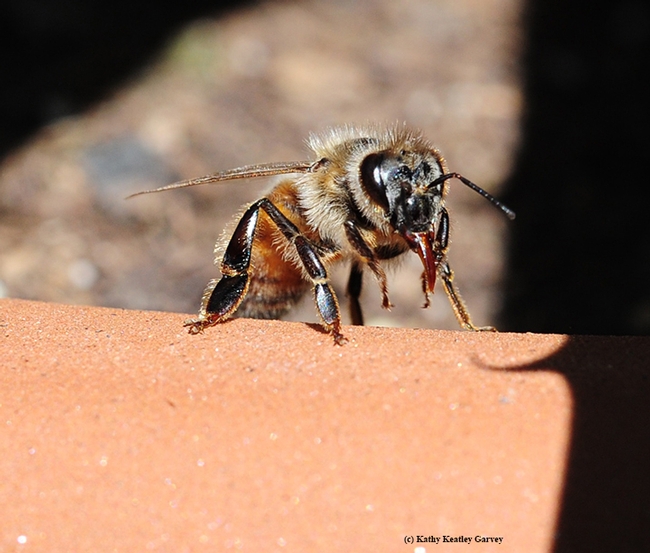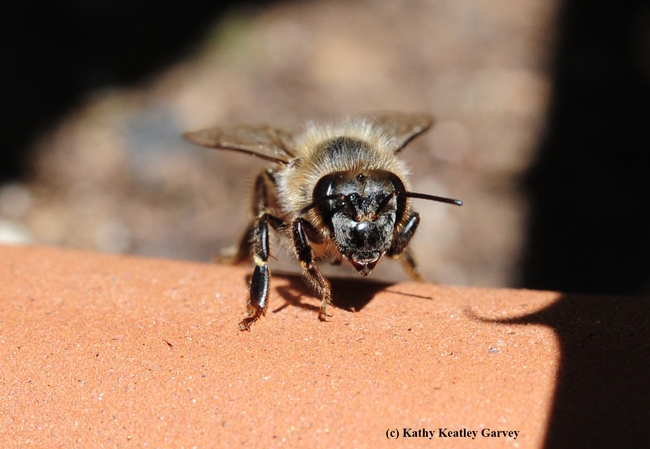This "B" gets an "A" for good grooming.
We recently watched a honey bee land on the edge of a planter. "Hmm," we thought. "Why is she landing there? She should be foraging on the flowers in the pollinator garden."
We soon found out. After positioning herself on the planter, she proceeded to clean her tongue. With her legs. That's what bees do. She was removing the pollen and other particles on her proboscis so she could continue functioning well.
Meanwhile, back at the hive, her sisters were engaging in the usual: doing all the housekeeping, storing pollen, making honey, guarding the colony, tending the young, serving as undertakers, and other jobs. Their mother, the queen, was busily laying eggs. She can lay as many as 2000 eggs a day during peak season. The colony needs the replacements. Worker bees usually live only four to six weeks.
What about the males (drones)? They do no work in the hive. Their only job is to mate with a virgin queen. And then they die. (Or as Extension apiculturist emeritus Eric Mussen of the UC Davis Department of Entomology and Nematology, quips: "They die with a smile on their face."
And the worker bee cleaning her tongue on the edge of the planter? Soon, grooming is over and it's back to work. The colony needs her.
Attached Images:

A honey bee lands on the edge of a planter and proceeds to clean her tongue (proboscis). (Photo by Kathy Keatley Garvey)

Honey bee removing the particles from her tongue so she can keep foraging. (Photo by Kathy Keatley Garvey)

Am I good to go? The honey bee finishes cleaning her tongue and stares at the photographer. (Photo by Kathy Keatley Garvey)